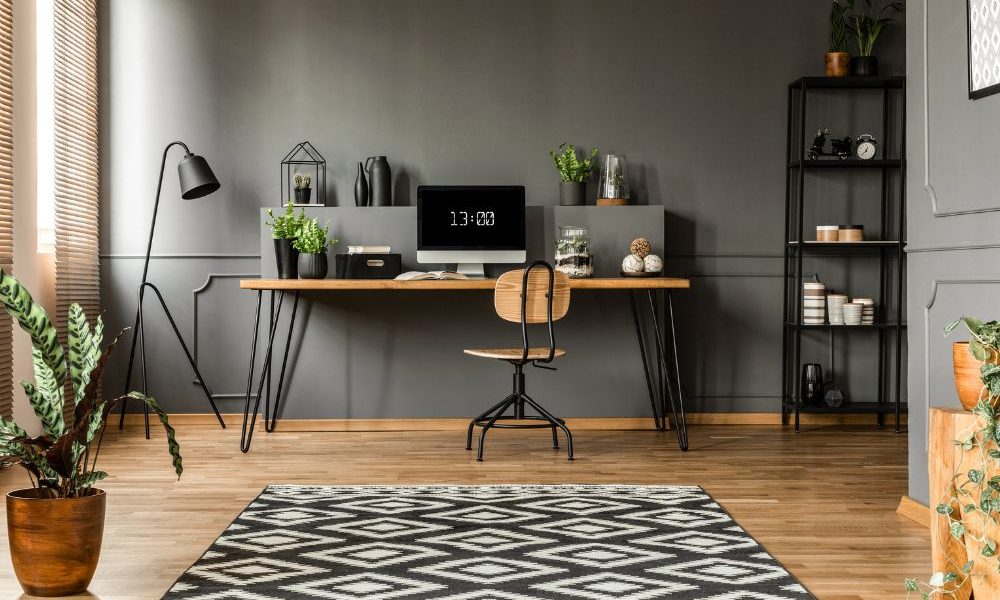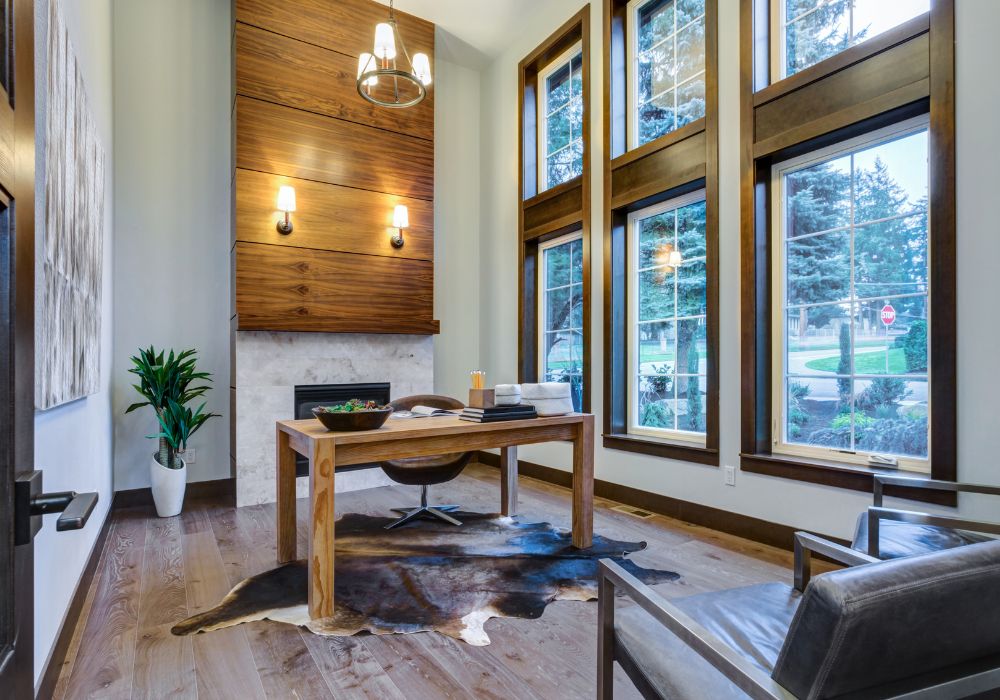In recent years, the home office has evolved from a luxury to a necessity. With more people working remotely, creating a productive and stylish home office is crucial for maintaining efficiency and motivation. A well-designed workspace can inspire creativity and boost productivity while reflecting your personal style. Here are some tips to help you create an effective and beautiful home office.
Choosing the Right Space
The first step in creating a home office is selecting the right location. Your workspace should be in a quiet area with minimal distractions. Ideally, it should be a separate room, but if space is limited, a well-defined corner can also work. Look for a spot with natural light, as this can enhance your mood and productivity.
When I first started working from home, I set up my office in a corner of the living room. It was convenient, but the constant noise and interruptions made it hard to concentrate. Eventually, I moved my office to a small, unused bedroom. The quiet and privacy made a huge difference in my productivity.
Investing in a Good Desk and Chair
Your desk and chair are the most important pieces of furniture in your home office. They need to be comfortable and ergonomic to support long hours of work. Caroline Grant of Dekar Design emphasizes the importance of designing a home office that inspires the person working in it. “It should be a place that they actually want to spend eight hours a day in,” she says.
I invested in a sturdy desk with ample space for my computer and other essentials. My chair is ergonomic, with adjustable height and lumbar support. This setup has significantly reduced my back pain and improved my overall comfort while working.
Incorporating Proper Storage
Proper storage is essential for maintaining an organized and clean workspace. Giovanni Scippo, Director at 3D Lines, advises not to neglect proper storage. “Proper storage for important things ensures an organized and clean space. It should also be within reach, so you don’t have to walk to the room’s far end just to get what you need,” he says.
In my home office, I use a combination of shelves, cabinets, and desk organizers to keep everything tidy. This not only keeps my workspace clutter-free but also ensures that I can quickly find what I need without disrupting my workflow.
Personalizing Your Space
Personalizing your home office can make it a more pleasant place to work. Add elements that reflect your personality and inspire you. This could include artwork, family photos, or decorative items. Martin Waller, Founder of Andrew Martin, suggests that a home office should have “crisp, clear lines, comfort and creative inspiration by way of artwork or patterned wallpaper.”
I decorated my office with a few of my favorite prints and some plants. These touches make the space feel more inviting and motivate me to be more productive.
Ensuring Proper Lighting
Good lighting is crucial for a home office. Natural light is best, but you should also have adequate artificial lighting to prevent eye strain. A combination of ambient, task, and accent lighting can create a well-lit and functional workspace. Martin Waller mentions that a desk light is not only functional but can also add style to your office.
In my office, I have a large window that lets in plenty of natural light during the day. I also use a desk lamp with adjustable brightness for task lighting and a floor lamp for ambient lighting. This setup ensures that my workspace is always well-lit, no matter the time of day.
Keeping Ergonomics in Mind
Ergonomics play a crucial role in creating a comfortable and healthy workspace. Your desk and chair should support good posture, and your computer monitor should be at eye level to prevent neck strain. Consider using a keyboard and mouse that promote a natural hand position.
After experiencing wrist pain from using a standard mouse, I switched to an ergonomic mouse and keyboard. These changes have made a big difference in my comfort and reduced my risk of repetitive strain injuries.
Adding Greenery
Plants can enhance the look of your home office and improve air quality. They can also boost your mood and reduce stress. Choose low-maintenance plants like succulents or peace lilies that thrive indoors.
I added a few small plants to my desk and a larger one in the corner of the room. They not only brighten up the space but also make it feel more alive and welcoming.
Incorporating Technology
Modern technology can enhance your productivity and streamline your workflow. Consider investing in a good-quality computer, a high-speed internet connection, and essential peripherals like a printer and scanner. Smart home devices like voice assistants can also be useful.
In my home office, I use a dual-monitor setup, which has significantly improved my efficiency. I also have a smart speaker that I use for quick searches and setting reminders. These tech upgrades have made my workday smoother and more efficient.
Keeping It Clutter-Free
A clutter-free workspace is essential for maintaining focus and productivity. Regularly declutter your desk and storage areas to keep your office organized. Implementing a clean desk policy at the end of each day can help maintain order.
Every Friday, I take a few minutes to tidy up my desk and put away any items that have accumulated during the week. This simple habit ensures that I start the next week with a clean and organized workspace.
Creating a Comfortable Atmosphere
Your home office should be a place where you feel comfortable and focused. Consider factors like temperature, noise levels, and air quality. A small fan or heater can help regulate the temperature, while noise-canceling headphones can block out distractions.
I use a white noise machine to mask background noise, which helps me concentrate better. I also have a small heater for the winter months to keep my office warm and cozy.
Balancing Style and Functionality
While it’s important for your home office to be functional, it should also reflect your personal style. Choose furniture and decor that you love and that make you feel good. This balance between style and functionality can make your office a place where you enjoy spending time.
I chose a desk with a sleek, modern design and paired it with a vintage chair that I found at a thrift store. The combination of modern and vintage elements gives my office a unique look that I love.
Conclusion
Creating a home office that boosts productivity and reflects your personal style is entirely possible with some thoughtful planning and design. By choosing the right space, investing in quality furniture, ensuring proper lighting, and adding personal touches, you can create a workspace that inspires you to do your best work.
Remember, the goal is to create a space where you feel comfortable, focused, and motivated. Take the time to plan and set up your home office according to your needs and preferences, and you’ll find that working from home can be both productive and enjoyable.
References:
Orentas, Geraldine. “12 Do’s And Don’ts For Setting Up A Home Office.” Forbes. Accessed on https://www.forbes.com/home-improvement/interior/home-office-dos-and-donts/.
Biggs, Caroline. “Our Best Home Office Ideas.” Martha Stewart. Accessed on https://www.marthastewart.com/1505155/easy-tips-ultimate-home-office.
“10 Home Office Design Tips For Your Dream Workspace.” Country Living. Accessed on https://www.countryliving.com/uk/homes-interiors/interiors/a1203/design-tips-dream-home-office/.





